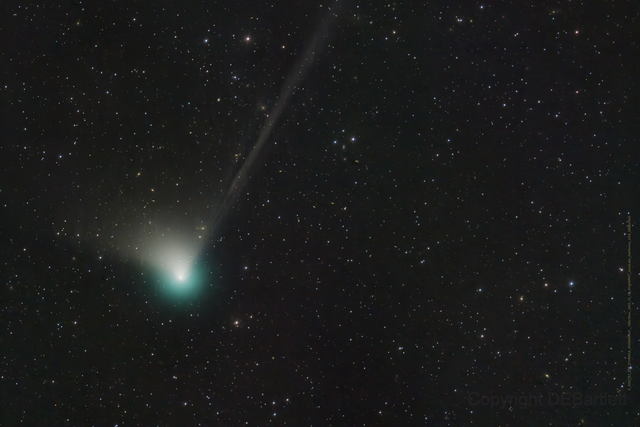Here’s something to look forward to in the new year: 2023 could give us a once-in-a-generation chance to see a new comet grace our skies.
1.01.2023

Comet C/2022 E3 (ZTF) was discovered by astronomers using the wide-field survey camera at the Zwicky Transient Facility this year in early March. This fine telescopic image was taken on December 19th.Dan Bartlett via NASA
Stargazers can keep their eyes peeled for Comet C/2022 E3 (ZTF)throughout January and early February, although they’ll need a telescope or binoculars to spot it at first. As the comet races closer to Earth, however, there’s a chance the comet could become visible to the naked eye under dark skies. If that happens, it’ll be the first comet to reveal itself to the unaided eye since NEOWISE passed us by in 2020.
This new comet was discovered last March while it was within Jupiter’s orbit. The comet’s current trajectory should bring it closest to the sun by January 12th. On February 2nd, according to NASA, it’ll be at its nearest position to Earth — some 26.4 million miles (42.5 million kilometers) from our planet.
The comet should appear in the early morning sky in the Northern Hemisphere in January, heading northwest and passing between the Little and Big Dippers toward the end of the month. Under the most optimistic scenario, Earth-dwellers might be able to view the comet with the naked eye by the latter half of January, Newsweekreports. Folks in the southern hemisphere will probably have to wait until early February for the comet to show itself. Comets can often be unpredictable, though, so we’ll have to wait and see if it stays on course.
Comets don’t emit their own light. They’re sometimes described as celestial “dirty snowballs” because they’re masses of ice, gases, rock, and dust. Melting ice gives the comet its tail. The ice also reflects the sun’s light, which makes it appear to glow.
Even if Comet C/2022 E3 (ZTF) does become bright enough for us to see without the help of binoculars or a telescope, it isn’t expected to be quite as flashy as NEOWISE was in 2020. Nevertheless, it’ll be a special moment for Earth — astronomers don’t expect Comet C/2022 E3 to visit us again for at least another 50,000 years, according to Newsweek.
“It’s still an awesome opportunity to make a personal connection with an icy visitor from the distant outer solar system,” Preston Dyches from NASA’s Jet Propulsion Laboratory, said in a video posted this week.
Quelle: The Verge

